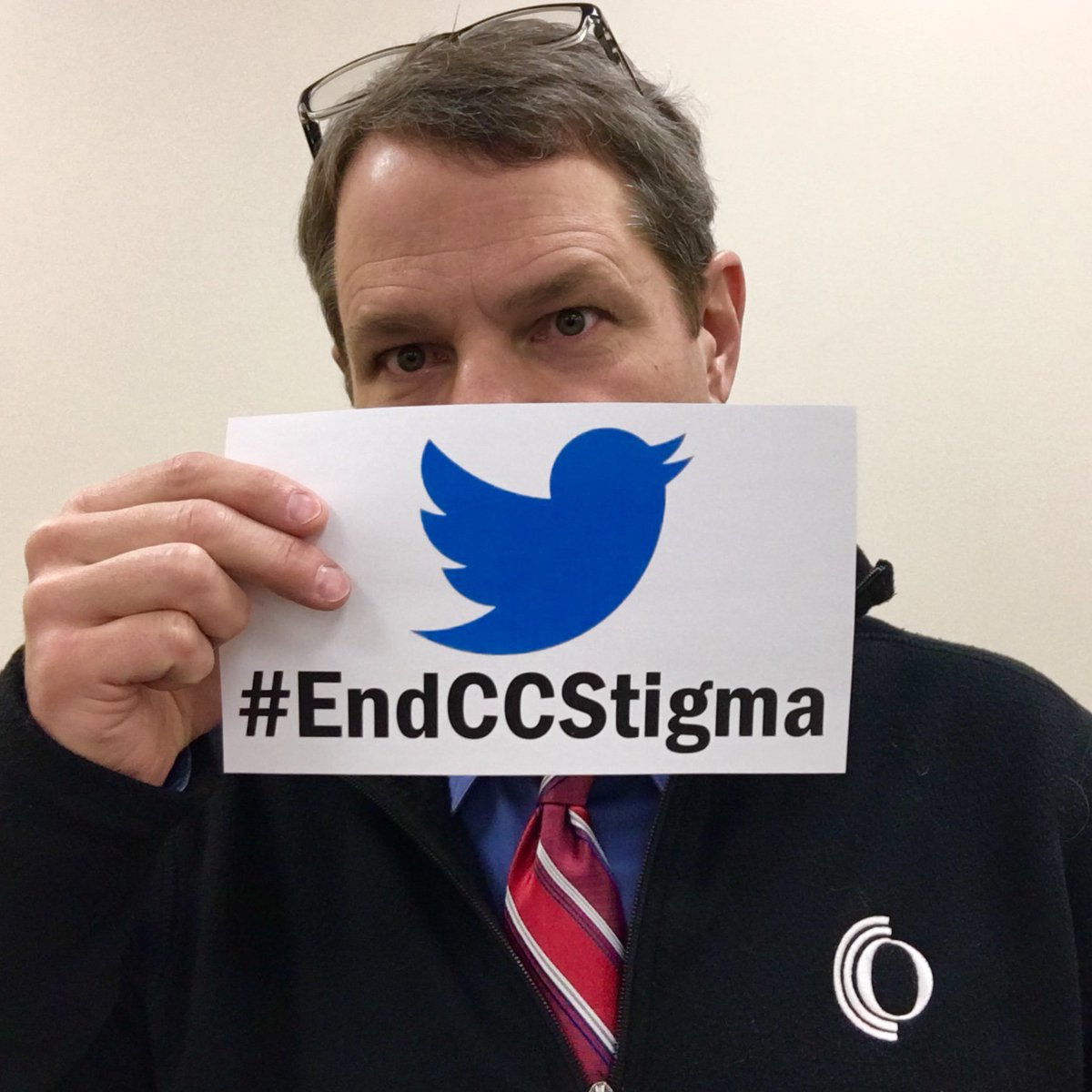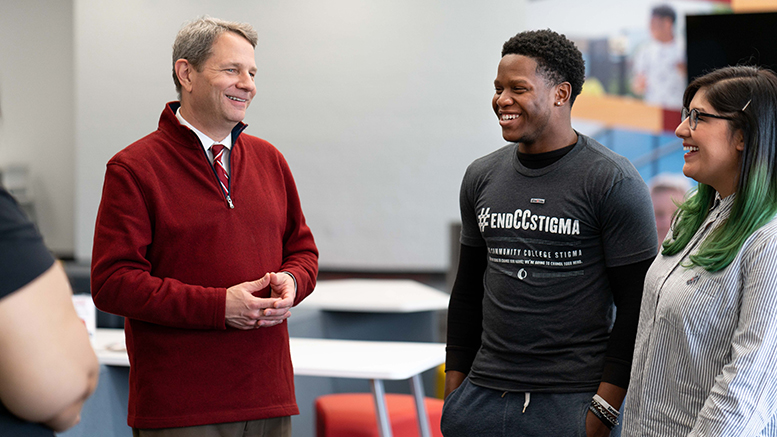Steve Robinson was in the middle of his 25-minute drive to work on a Thursday morning last February when three nagging thoughts gelled into a plan.
First, community colleges endure a stigma. Robinson, president of Owens Community College, near Toledo, Ohio, says he’s encountered it all his career.
Second, the stigma is not grounded in reality. The days when a two-year college could be passed off as a “13th year of high school” or “last chance college” – to name just a couple of derogatory references – are long gone.
And third, it was time to push back. Simply telling positive stories about community college educations and students wasn’t enough.
Robinson reached his campus, hurried into his office and set about making a sign. He held the sign up to his chin, snapped a selfie and shared the photo on the @OCCPresident Twitter feed.
#EndCCStigma, the sign read.
A campaign was born.
‘A responsibility to confront stigma’
Six months later, #EndCCStigma has evolved into a lively Twitter forum, a podcast and an ongoing discussion among community college leaders.
“I think what Steve is doing is letting everyone in community colleges know that we all have a responsibility to confront stigma,” said Robert Templin, former president of Northern Virginia Community College and a senior fellow at the Aspen Institute.
Community college leaders have complained for years about the insults their schools and students endure – from insinuations that two-year colleges are not “real” colleges, to artificial rankings that actually penalize high schools for sending graduates to community colleges rather than four-year institutions.
Betty Young, a community college president, mounted a high-profile protest in 2005 after NBC’s Tonight Show host Jay Leno joked that an education in prostitution would “be less embarrassing than going to a junior college.”
Young hopped on her motorcycle and embarked on a nine-day Ohio-to-California road trip, with multiple stops along the way to extol the virtues of a community college education.
In Los Angeles, she scored a short visit with Leno. Young told him her story – how a community college education started a single mother on her way to multiple degrees and top jobs in college leadership.
“For anyone in the media to say that a community college is not as good, I know better,” Young said.
Leno didn’t exactly apologize, she remembers, but he seemed to get the point. “I think maybe he and others started to lay off,” said Young, now president of Hocking College in eastern Ohio.
Addressing misperceptions
But a road trip has to end at some point. Robinson’s social media campaign appears to have staying power.
His podcast, which is planning an upcoming second season, features students, faculty and others.
In one segment, student Maddi Cumpston shared the satisfaction she gained while studying and competing in volleyball at Hutchinson Community College in Kansas. “Overall that school is amazing,” she said. “I go back there all the time.”

The photo that got the campaign rolling.
But when she transferred to Oklahoma State University to major in sports management, classmates appeared perplexed when she told them she’d come from community college. “Like, did you not have a high enough ACT score to come here?” Cumpston recalled.
In another podcast segment, Alex Johnson, president of Cuyahoga Community College in Cleveland and chair of the American Association of Community Colleges board of directors, said stigma dates to the founding of the first two-year colleges in the early 1900s. Those schools, Johnson said, “were designed for individuals whose ultimate goal was to get into four-year institutions but could not do it at that particular point in time.”
Johnson said he continues to encounter stigma – often unwittingly from boosters of community colleges.
“It has to do with individuals who want to extol the virtues of community colleges and position them as institutions that promote workforce development,” Johnson said. “But they don’t distinguish that community colleges are indeed postsecondary institutions, so you hear such phrases like, ‘not everybody can go to college.’”
Finding diamonds
Templin, who applauds the podcasts, pointed out that the notion of inferior community college learning has been disproven by multiple studies. One of the latest, from the Jack Kent Cooke Foundation, shows that while few community college students transfer to elite universities, those who do graduate on time and at rates equal to or higher than classmates who enroll directly out of high school or transfer from four-year colleges.
Templin, who began his postsecondary education at a community college, said stigma has consequences. “Because of the stigma that a community college wasn’t a real college, I never considered attending a highly selective institution,” he said.
That sort of reluctance harms not only students, but also the elite universities that would benefit from the diversity and resiliency that community college transfer students bring to campuses, Templin said. America’s leadership pipeline, which often draws from top-tier universities, also loses out.
Templin said he draws encouragement from initiatives like one underway at the Cooke Foundation, which is partnering with eight selective universities to help more than 1,000 talented low- and-moderate income community college students transfer to those campuses.
Karen Stout, executive director of Achieving the Dream, a non-profit group that works with a national network of community colleges to improve outcomes for students, also sees progress.
Some parents and counselors may view a community college education as second-rate, but employers and communities regard them as valued assets, she said. And for students, “I think when they come on our campuses any misperceptions are dissipated.”
If stigma persists, it may be because community colleges are focused on supporting their students and communities rather than worrying about their collective national image, Stout added.
Beyond preaching to the choir
Scraping outdated mold off of that image is what Robinson and the #EndCCStigma campaign are all about.
“The main objective is to create a more accurate view of community colleges in the shared conscience of our country,” he said.
Robinson said he hoped to shape his podcast’s next season to reach more of an audience beyond community college circles. He’s also accepted some speaking engagements. A few people have suggested a book, but that’s not high on his list.
“I think I’m more interested in doing the campaign than writing about it. I see my role as amplifying and aggregating,” Robinson said.
Plus, he’s got a college to run.

